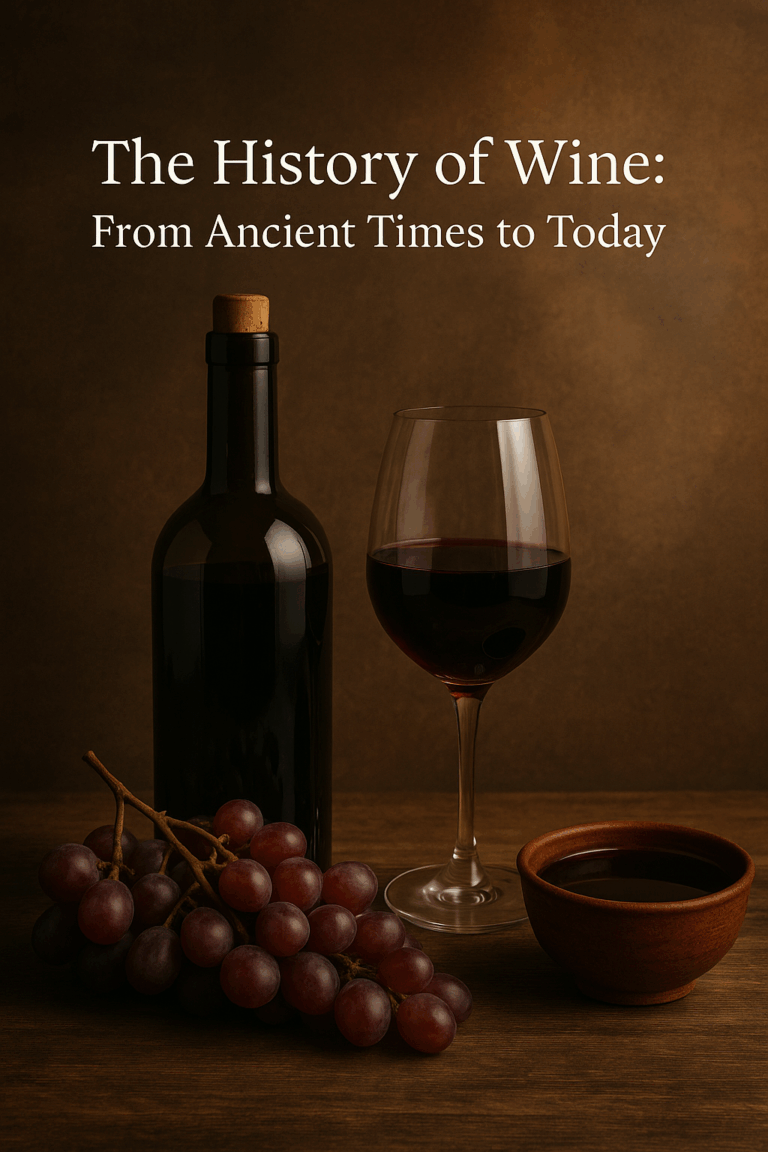The Rise of Canned and Boxed Wines: Are They Any Good?
Once dismissed as cheap or low-quality, canned and boxed wines have experienced a surprising transformation. Today, these alternative formats are growing in popularity not just for their convenience, but because many now offer wines of genuine quality, made by respected producers.
But are they really as good as bottled wine? And when should you consider choosing one of these modern options?
Let’s break down what’s driving the rise of canned and boxed wines and whether they’re worth a place in your wine rotation.
Why Canned and Boxed Wines Are Gaining Popularity
The shift toward alternative packaging has been driven by several factors:
- Convenience: Easy to transport, open, and store
- Portion control: Smaller servings for casual sipping
- Sustainability: Lower carbon footprint and less packaging waste
- Affordability: Less expensive to produce and ship than glass bottles
- Changing wine culture: Casual, on-the-go drinking has become more accepted
These formats appeal especially to younger consumers, outdoor enthusiasts, and anyone seeking a more flexible way to enjoy wine without committing to a full bottle.
Are Canned and Boxed Wines Lower Quality?
Not necessarily — and this is where perceptions are starting to shift.
In the past, boxed and canned wines were often associated with mass-produced, sweet, or generic wines. But in recent years, serious winemakers have entered the space, offering:
- Fresh white and rosé wines
- Light, fruity reds
- Sparkling wines (carbonated in-can)
- Organic or natural wines
- Limited releases and vintage-dated selections
Many of these wines are made with the same care and grapes as bottled wines just packaged differently.
When Cans and Boxes Actually Work Better
Certain wine styles are better suited to alternative packaging especially those meant to be enjoyed young and fresh.
Ideal for cans:
- Rosé: Crisp, refreshing, and often consumed outdoors
- Sauvignon Blanc: Zippy and bright
- Sparkling wine: In single servings, perfect for brunch or events
- Light reds: Like Pinot Noir or Gamay — even served slightly chilled
Ideal for boxes:
- Everyday table wines
- Party wines or crowd-pleasers
- Cooking wine that lasts longer
- Sustainable options with minimal waste
Boxed wine can stay fresh for 3 to 6 weeks after opening thanks to its vacuum-sealed spout, making it great for casual glass-by-glass drinking.
Are There Downsides?
Yes, but mostly depending on what you’re looking for:
- Not ideal for aging: Cans and boxes are meant for immediate consumption
- Limited styles: You won’t find aged reds or high-end wines in these formats (yet)
- Temperature sensitivity: Cans can heat quickly if not kept cool
- Perception: In some circles, boxed or canned wine still carries a stigma
That said, for casual occasions, these formats offer practicality without major compromise.
Sustainability Benefits
One of the biggest advantages of alternative packaging is environmental impact:
- Cans are lightweight, fully recyclable, and require less energy to transport
- Boxes use far less packaging than glass and weigh significantly less
- Both formats contribute to lower emissions throughout the supply chain
For eco-conscious consumers, choosing canned or boxed wine can be a smart and sustainable decision.
What to Look for When Buying
Not all canned or boxed wines are equal. To get the best experience:
- Check the producer: Well-known wineries now offer premium options in alternative packaging
- Look for vintage date: Indicates freshness and quality
- Choose wines intended for casual drinking: Don’t expect complexity or aging potential
- Buy from trusted retailers: Avoid overly sweet or generic brands unless that’s your style
If you’re unsure, start with rosé in a can or a quality white in a 3L box — these are often the safest bets.
When and Where They Shine
Canned and boxed wines are perfect for:
- Picnics and barbecues
- Beach days and camping trips
- Airplane travel and hotel rooms
- Casual dinners and weeknight pours
- Weddings, parties, or events with a large crowd
They’re not meant to replace collectible bottles — they’re made to be easy, enjoyable, and accessible.
A Fresh Take on Wine Drinking
Canned and boxed wines have come a long way. With increasing quality, lower environmental impact, and unmatched convenience, they’ve earned a spot in the modern wine world. While they’re not designed for cellaring or special occasions, they’re perfect for everyday enjoyment and for breaking the old rules of wine culture in all the right ways.
Whether you’re packing a cooler or just want a glass without opening a bottle, don’t be afraid to give these alternatives a try. You might be surprised at just how good they’ve become.






